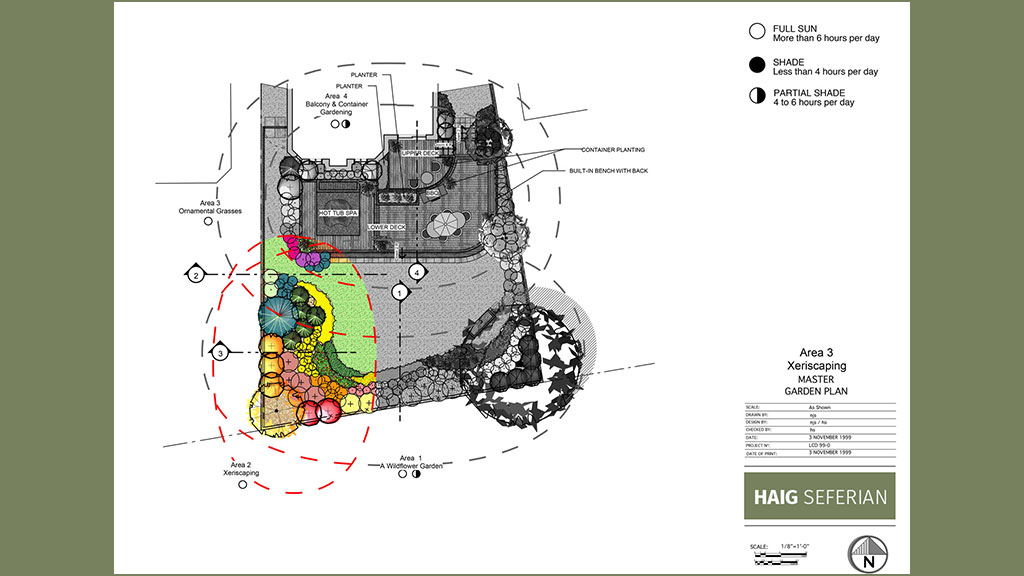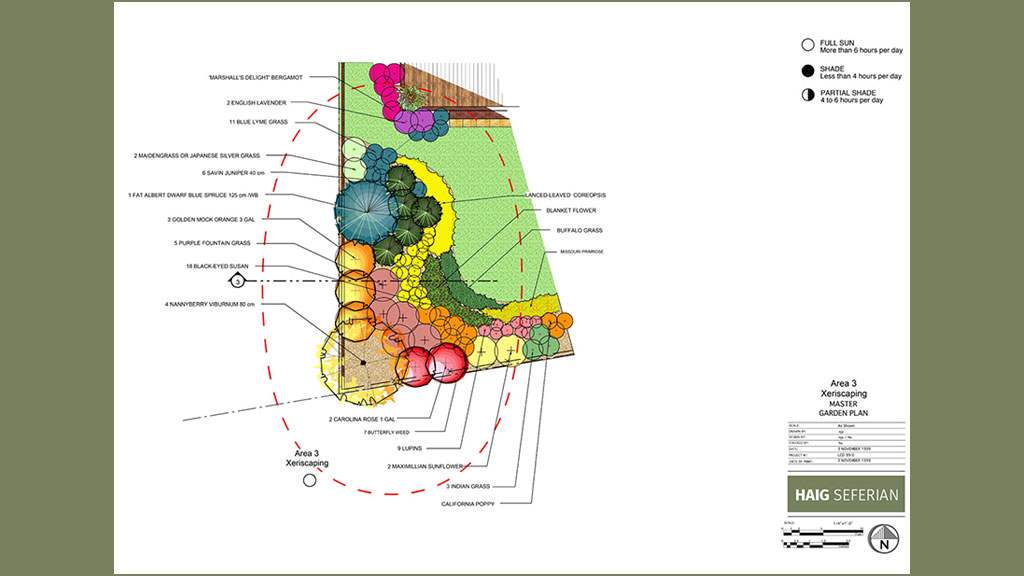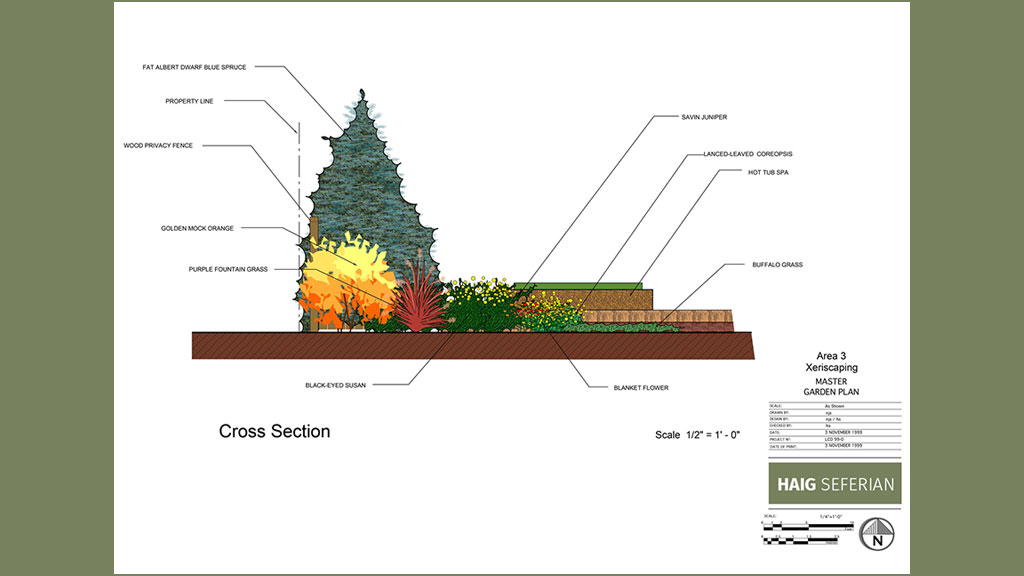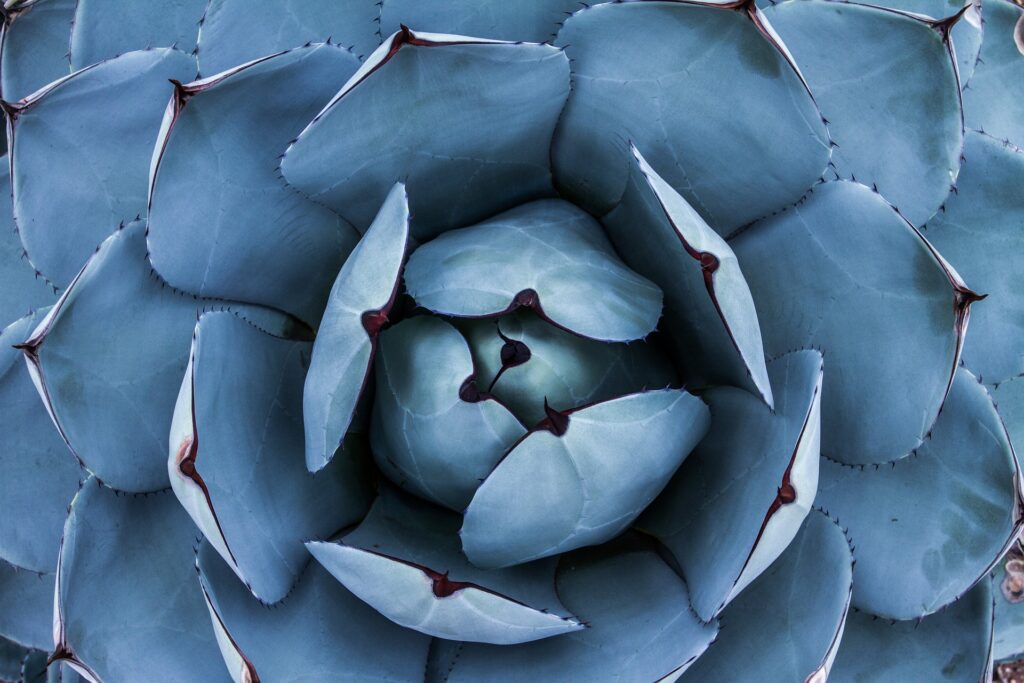There is one thing that gardeners can no longer afford to take for granted and that is water. We know that nearly two thirds of the planet is covered with water, but did you know that only 3% of that is actually available for consumption and use? One of our most precious natural resources, water is finite; it cannot be recreated or produced in any other fashion. What we have is all we have. Along with global warming, the World Health Organization is predicting unprecedented water wars in the next century over the shortage of drinkable and usable water. Certain countries have so much, yet it is not drinkable, while others have not enough to survive. Environmentalists have been looking at more efficient ways to use this finite resource. As gardeners, we can make our own contribution to the effort and it does not mean that we will no longer be able to have our lush gardens full of green turf and roses. Because of this, xeriscape gardening has become increasingly popular over the last decade.

Xeriscape comes from the Green word xeros meaning “dry”. Xeriscape gardening means designing a garden that will use considerably less water, and one which can offer a beautiful looking landscape. Some key benefits to xeriscaping are decreased water bills, the ability of your plants to survive natural drought conditions and a significant reduction in garden maintenance. These serve to increase the value of your property, help improve environmental conditions and bring you more in tune with nature, as you are introduced to new attractive plants and economical gardening techniques.
Xeriscaping does not involve a lot of maintenance as already mentioned, but it does require careful thought and planning at the outset. There are some fundamental principles to creating your water efficient garden:
1. Effective planning and design
2. Assessing your soil
3. Appropriate use of turf
4. Efficient irrigation
5. Choice of plant material
6. Mulches

First, start out by drawing a preliminary plan based on the area that you have, and your family’s requirements and desires, while incorporating some of the aesthetic principles of design, such as form, function, proportion, style, colour and texture.
Next, conduct a careful analysis of soil conditions to ensure the nutrient balance is correct as decreased water and healthy vegetation require very healthy soil. You will need at least 6” (up to 24” for beds and borders” of fertile topsoil……..the better the quality of topsoil, the better the health of your plantings. If you are unsure of the quality of your soil, lawn care companies can conduct the appropriate test for you.
Appropriate use of turf entails being a bit more creative and open mined considering alternative grass species. This may lead you to alter your vision of the perfect lawn, but the end result will be no less attractive, in addition to being lower maintenance. Take a look at using native grasses. These will be ones that already can endure the amount of precipitation in your area and will allow you to create a landscape more in harmony with your natural surroundings.
Remember that there are basically two types of grasses. First there are the cool season grasses, then there are the warm season grasses. The cool season ones are those the temperature is cool for most of the growing season. Fescues are ideal in cooler climates. They grow very well in sun or shade and maintain their green colour for a large period of time. Generally, fescues grow in clumps, but if seeded very densely, can produce a thick rich mat that should be mowed to about 3.5 to 6” in height.

Warm season grasses are the exact opposite and flourish in regions where the temperature is higher most of the time. Bermuda grass is ideal for this as it is a low growing, medium green coloured grass with a fine texture to it. You can also take a look at buffalo grass and St. Augustine grass. Both of these do well in warmer areas, except that buffalo grass is hardier for cold winters than the others.
Or, you can choose to eliminate grass completely and use ground covers, perennials, or shrubs in its place. If this is too drastic for you, you can just decrease the are of water intensive grass by using a mixture of some of the grasses described above. This will create contrast in texture, size and colour, and will be an attractive unique feature in your garden.
Efficient irrigation is key to xeriscape gardening. Ideally, you should only water as frequently as your plants need it and at the rate that the soil can absorb it. Avoid frequent watering and wasteful run-off and puddling. Check your soil surface and in the root zone to see if there is enough moisture. Learn to recognize signs of dehydration in plants, such as falling leaves or the change in grass colour to a dull green or brown.
If you have an automatic sprinkler, water for short durations in the early morning and evening. Use a drip method of irrigation for landscape plantings, which will decrease water evaporation. Try using grey water or backwash water. Grey water is water that has already been used such as dishwater or laundry water, or even water from a bath or shower. Just be careful that the grey water you’re using does not contain harmful chemicals. Backwash water comes from your pool and can be used to water your lawn. Again, be careful that the chlorine level is not too high.
When choosing plants for a water saving garden, you have to look at plant varieties that thrive naturally in dry conditions. This does not mean that they are desert plants, but that they have characteristics that help them survive without a lot of moisture at regular intervals. The way plants are grouped also makes a difference in water use. By dividing the garden to the water needs of the plants, you are managing and maintaining effective use of water. If you have different soil conditions on your site, you can plant water loving plants like roses in the wettest areas and those requiring less water in the drier areas.
Finally, mulching is fundamental to maintaining a water efficient garden. Mulch serves as a blanket for your plants by covering the top of the soil and around the roots of the plant. Mulching has many benefits to plantings. It keeps the sun’s heat from drying out the roots of the plant, it helps to control weeds and it can also improve the quality of the soil. As you can see, mulches help to keep plants warm and moist and cool all year long.
There are organic mulches, such as vegetation, wood chips, peat moss, pine needles and straw. Inorganic mulches are derived from natural non-plant materials like rock, gravel, coarse sand, and brick chips the best mulch of all is drought resistant ground cover. In addition to providing all the benefits of other mulches, ground covers also add beauty and colour to your landscape.
With these principles in mind, you will be on your way to conserving our most irreplaceable natural resource, being water, and helping to create a healthier and more beautiful environment for all.

